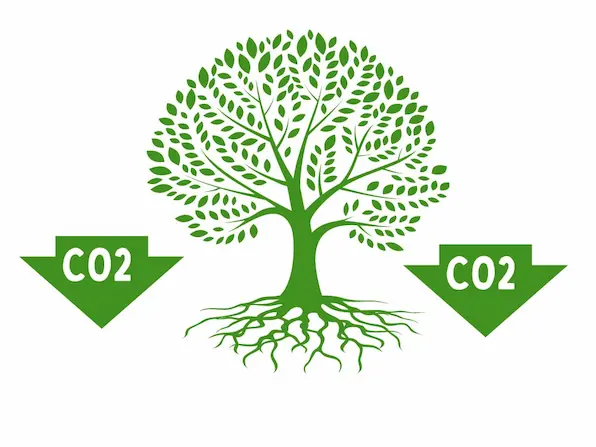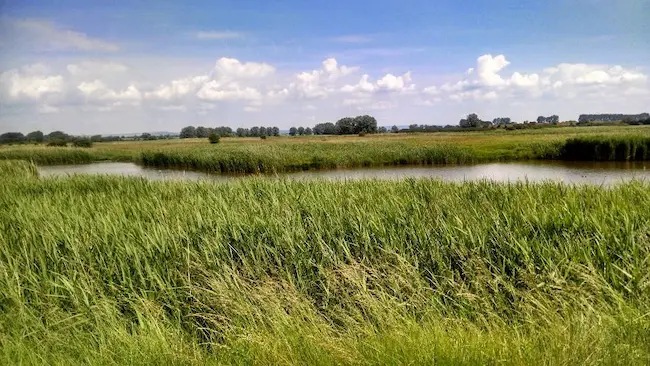What is Biodiversity Net Gain: A Summary of Key Components
Biodiversity Net Gain (BNG) is a new approach aimed at reversing the growing trend of biodiversity loss. But how does it works? What are its potential benefits and the likely challenges it faces?
Here, we’ve put together a simple guide for you to cover these questions. Let’s get started!
What is Biodiversity Net Gain (BNG)?

BNG is a concept in development and land management that aims to leave biodiversity in a measurably better state than before a project takes place. In simpler terms, it ensures that development has a positive impact on the variety of life in an area.
Traditionally, development often resulted in a net loss of habitats. BNG flips this on its head, requiring developers to create or improve natural habitats to an extent that outweighs the ecological damage caused by the project.
How Does Biodiversity Net Gain Work?
BNG relies on a metric system to quantify the value of biodiversity at a development site. This metric considers factors like the type and quality of existing habitats, the presence of specific species, and the overall ecological connectivity of the area.

Breakdown of The BNG Process
1. Baseline Assessment
The first step involves conducting a thorough ecological survey of the development site to establish the existing biodiversity value. This assessment helps determine the amount of “biodiversity units” present.
2. Impact Assessment
The developer then assesses the potential impact of the project on these biodiversity units. This helps estimate the number of units that would be lost due to development.

3. The Net Gain Target
Based on the baseline and impact assessments, a net gain target is set. This target, often mandated by local regulations, usually requires a minimum percentage increase in biodiversity units (e.g., 10% in England).
4. Achieving Biodiversity Net Gain
Developers have several options to achieve the net gain target. They can create new habitats on the development site itself (e.g., planting trees, creating wildlife ponds), enhance existing habitats (e.g., restoring degraded land), or invest in off-site habitat creation or restoration projects elsewhere.
5. Monitoring and Maintenance
Once the mitigation measures are implemented, long-term monitoring and maintenance plans become crucial. These ensure the eventual success of the BNG strategy (for example, 30 year monitoring period required in England).

Benefits of Biodiversity Net Gain
BNG offers a range of benefits for both the environment and society.
These benefits are often delivered through Nature Based Solution (NbS) projects, with BNG targeted to enhance project value.
The key BNG benefits include:
Halting Biodiversity Loss: By requiring a net gain in biodiversity, BNG helps to halt the ongoing decline of species and habitats.
Habitat Creation and Restoration: BNG incentivises the creation of new habitats by making them a financial commodity. This leads to increased green spaces and improved ecological connectivity. A wider range of species can in turn benefited, not just those directly impacted by development. There is also potential for this benefit to overlap with the growth of Urban Rewilding.

Enhanced Ecosystem Services: Healthy ecosystems provide us with a variety of services like clean air and water, flood protection, and pollination. BNG helps to maintain and enhance these valuable services.
Improved Health and Wellbeing: Access to nature provides numerous benefits for human health and wellbeing. BNG can contribute to creating developments with more green spaces, offering residents opportunities for recreation and connection with nature.
Climate Change Mitigation: Healthy ecosystems play a crucial role in mitigating climate change by absorbing carbon dioxide. BNG can therefore contribute to increased carbon sequestration through habitat creation and restoration. This in means there is potential for BNG to overlap with carbon offsetting activities.

BNG Challenges and Considerations
While BNG holds significant promise, there are challenges to consider:
Metric System Refinement: Current metric systems for biodiversity valuation are still under development. Ensuring accurate and consistent application across different projects requires ongoing refinement to ensure the valuations made are robust.
Monitoring and Enforcement: Effective monitoring and enforcement of BNG plans are crucial for success. This requires appropriate resources and expertise from both developers and regulatory bodies. However, funding for regulatory bodies in the public sector is already limited. There is therefore risk that monitoring capabilities will be insufficient.

Long-Term Management: BNG requires long-term commitment to ensuring the viability of created or restored habitats. Funding mechanisms must be established for the ongoing maintenance of these areas.
Available Expertise: To enable the assessment, valuation and monitoring needed, an increase in trained expertise is required. There is however an ongoing shortfall of expertise in the field of Nature that must be addressed.

The Future of Biodiversity Net Gain
BNG is a relatively new approach, but it’s gaining momentum around the world. In England, for example, BNG became mandatory for most developments in February 2024.
As BNG becomes more widely adopted, refinements to the valuation, improved monitoring practices, and innovative financing solutions will be necessary to ensure its long-term success.
If these challenges can be met, then implementing BNG will enable a bright future for biodiversity. A future where development and conservation go hand-in-hand, with biodiversity acknowledged for the truly fantastic value it offers society.
To support you further, we recommend you check out the following additional resources:
Rewilding Explained: Benefits, Challenges & Examples






